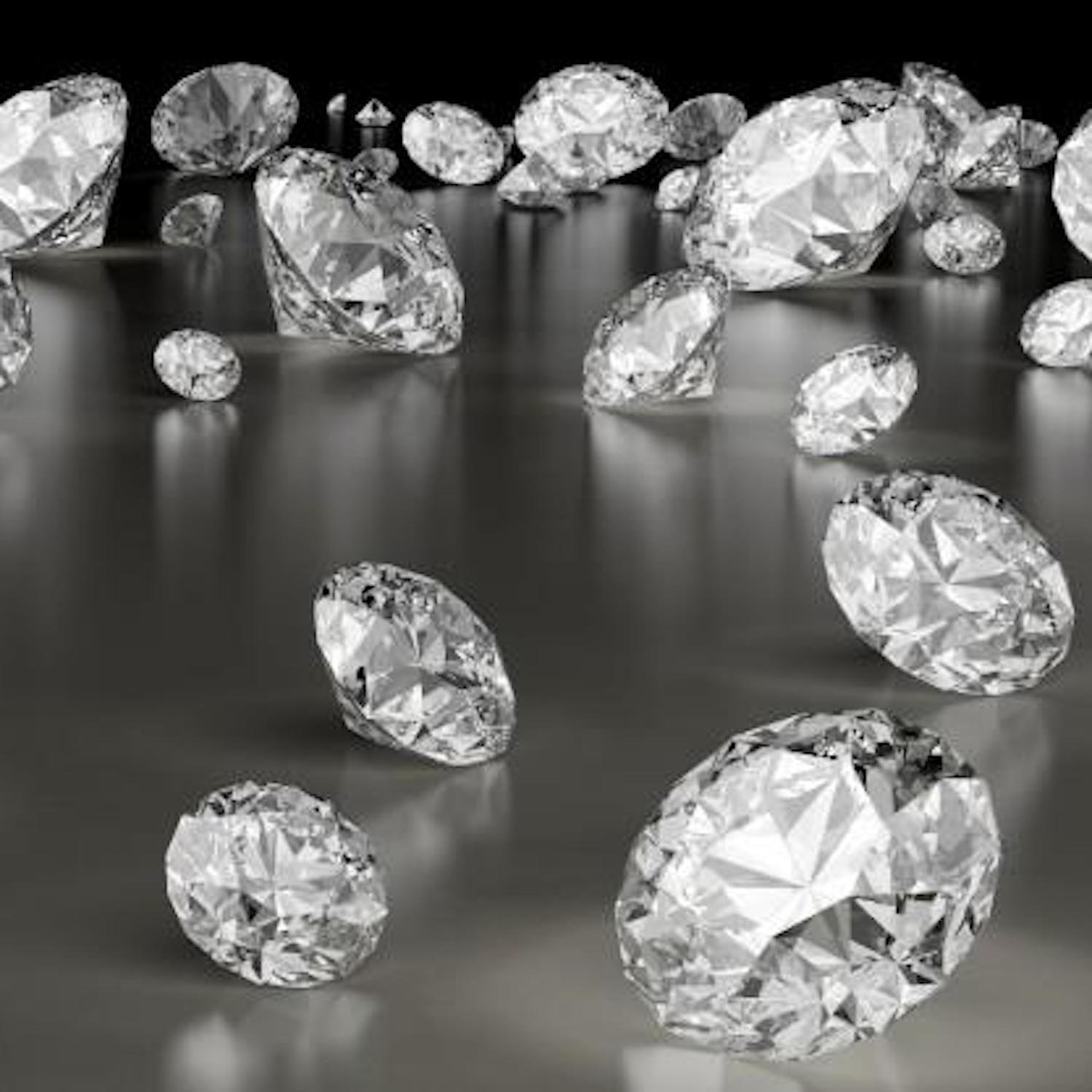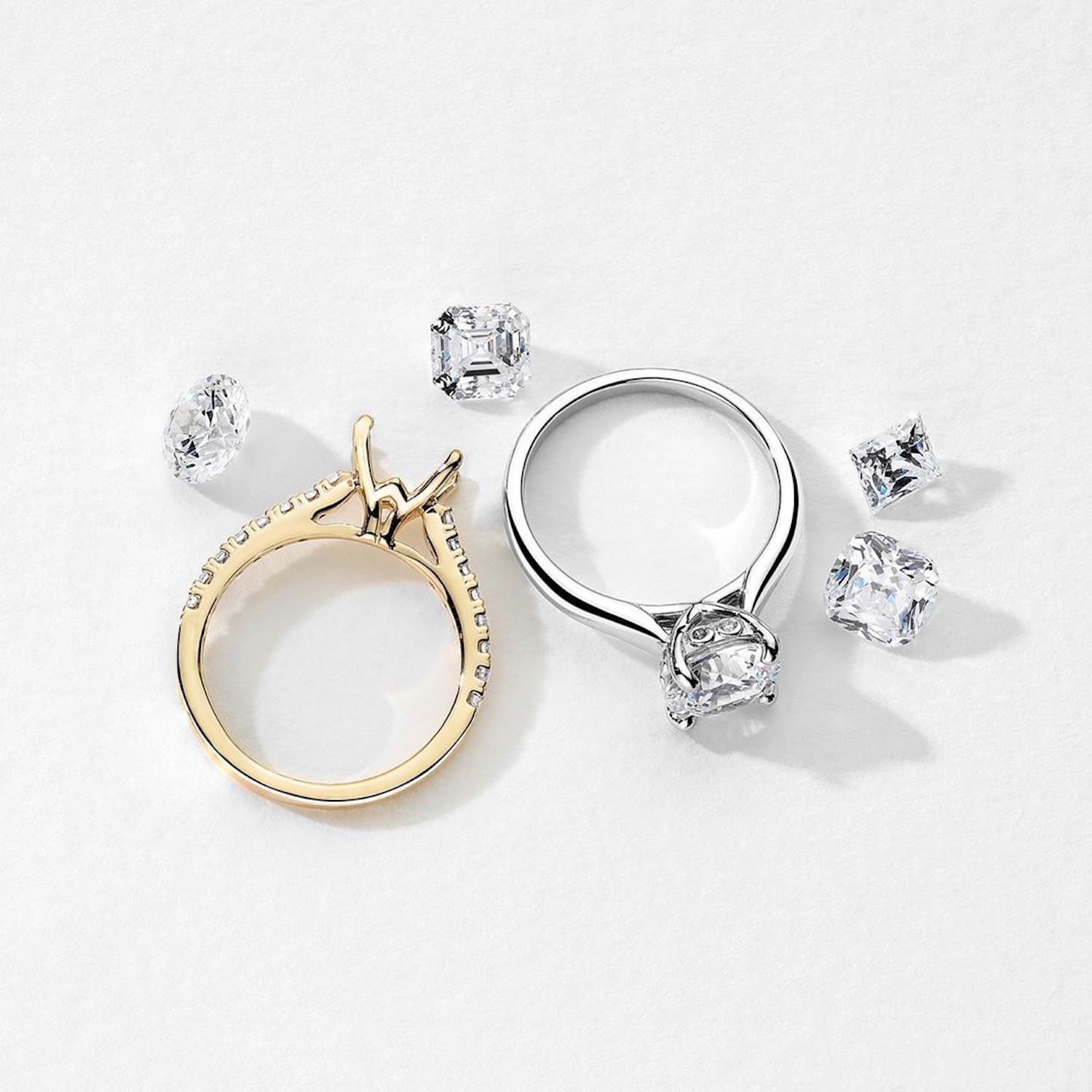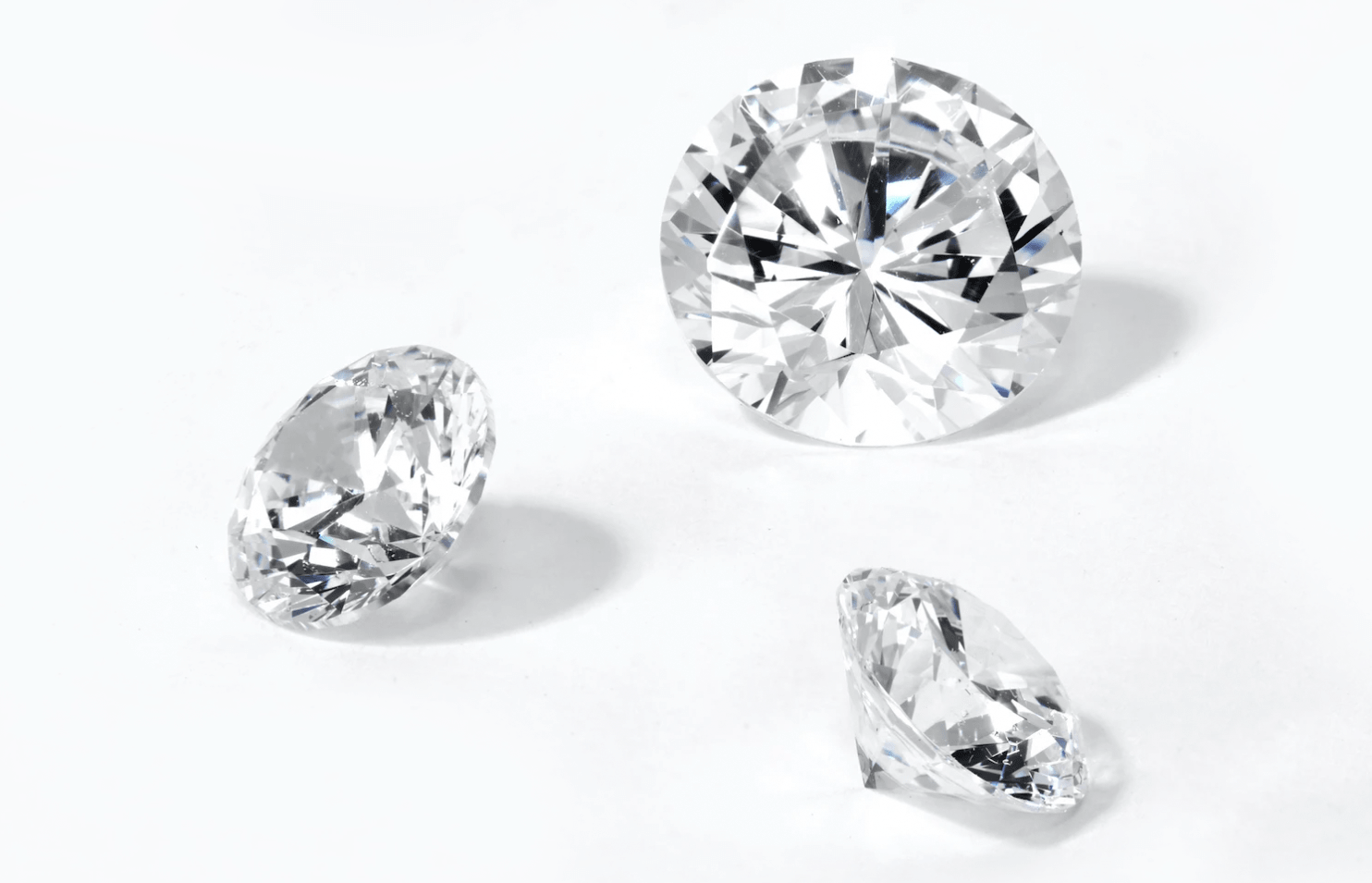7 Ways To Spot Fake Diamonds
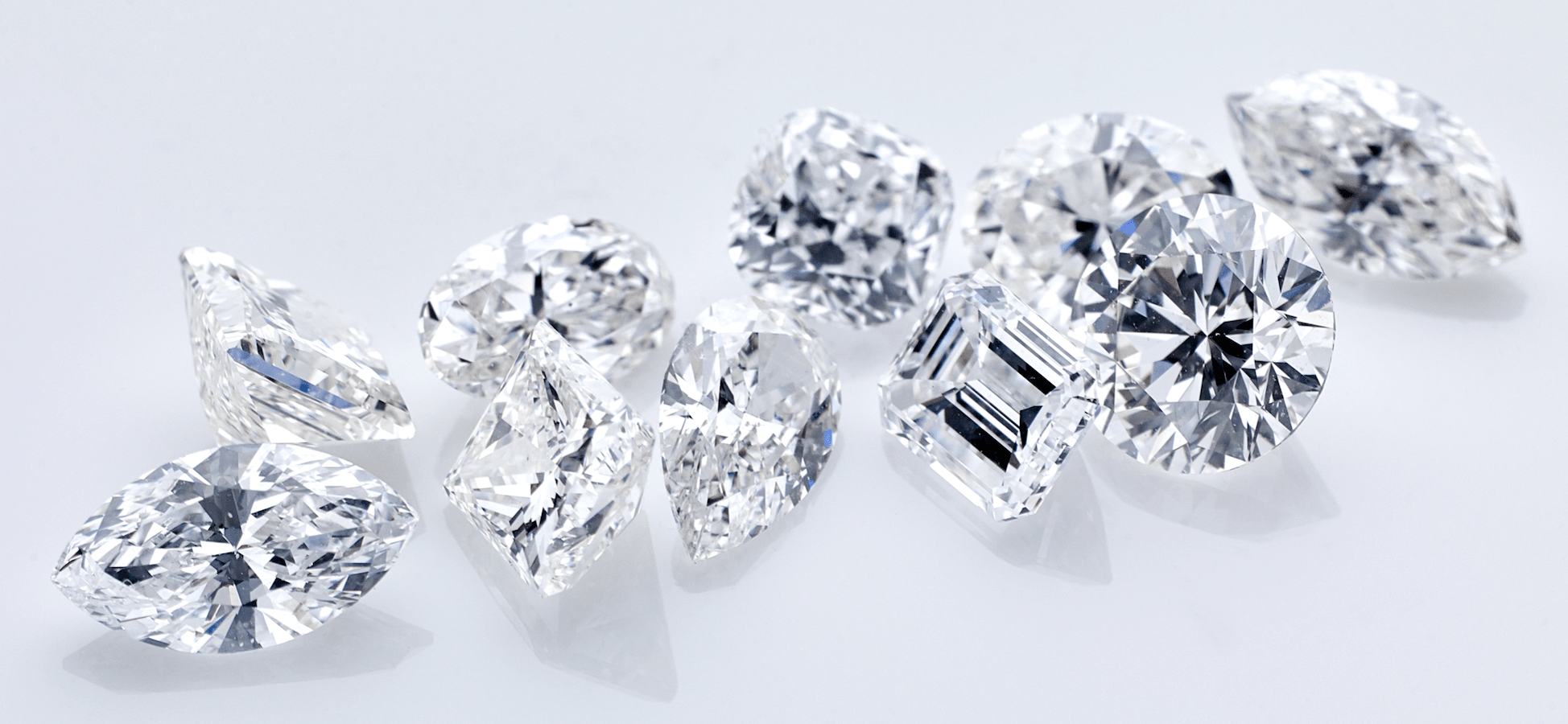
Have you ever been suspicious that a loose diamond you bought wasn’t real, or wondered whether your diamond jewelry was genuine? If the stone came with a certificate from the GIA or AGS, you can rest assured that it’s legit. However, if the diamond was a gift or an inheritance and you don’t have the certificate, you’re right to wonder.
If you’ve got a stone you’re in doubt about, here are 7 ways to check its authenticity.
- The Magnification Test
- The Fog Test
- The Black Light Test
- The Newspaper Test
- The Temperature Test
- The Water Test
- The Conductivity Test
Should you try the scratch test?
People used to think that the “scratch test” was the easiest way to test a diamond. The test is to simply scratch the loose stone against a mirror. The idea is that if the stone is hard enough to scratch the mirror, it’s probably a diamond.
In terms of the Mohs scale, however, this test proves inaccurate. The Mohs scale is a scientific measurement of mineral hardness. Glass is rated a 5.5, and diamonds, the hardest mineral, are a 10. So, genuine diamonds will scratch a mirror. On the other hand, so will quartz (7), moissanite (9.25), and cubic zirconia (8). Moissanite and cubic zirconia engagement rings are almost as hard as their diamond counterparts.
Most well-made synthetic diamonds will seem authentic if you only use the scratch test. Here are some other tests with more reliable results.
1. It’s a little too perfect: The Magnification Test
What you need:
| 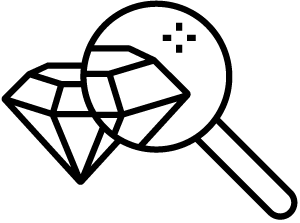 |
How it works:
First look at your questionable stone under the microscope. Then look at the genuine diamond, and compare the differences. The genuine diamond will have some internal or external flaws, known as inclusions. If the other stone is cubic zirconia or moissanite, it will have no internal flaws, and probably no external flaws either.
That’s because real diamonds are natural rocks that were formed in the earth, while cubic zirconia and moissanite are grown in labs. They’re not subject to all the environmental pressures that diamonds get while forming, so they don’t have those telltale quirks that identify a real diamond.
Caveats:
2. It retains heat: The Fog TestWhat you need:
| 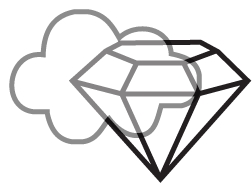 |
How it works:
Go to a relatively cool location, and blow hot air on the stone. (Just don’t do this in the middle of Central Park unless you want to get some funny looks.) You’re trying to surround the stone with warm moist air. Since a real diamond doesn’t retain heat well, your breath won’t create a fog on its surface. But a piece of moissanite will get fogged up quickly, just like your mirror, sunglasses, or cell phone screen.
3. It doesn’t glow: The Black Light TestWhat you need:
| 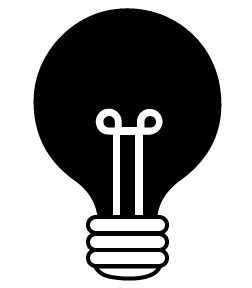 |
How it works:
Hold the stone under the UV light, and see if the color seems to change at all. If the stone emits a bluish glow, it is most likely a real diamond.
Caveats:
Because of the way fluorescence in real diamonds works, this test isn’t definitive. Since some real diamonds don’t have any fluorescence, you wouldn’t see a blue glow even if it was real.
So, if the stone doesn’t emit a blue glow or glows a different color under the UV light, you can try another one of these tests at home. To get the most definitive answer, you should take it in to a professional jeweler.


4. You can see right through it: The Newspaper TestWhat you need:
| |
How it works:
Place the stone on top of the newspaper, and see if you can read the words on the page through it.
A real diamond of decent quality will refract light so intensely that you can’t see through it. On the other hand, cubic zirconia is more transparent, and you’ll be able to see right through it.
Caveats:
This test is less reliable if the stone is relatively small (less than a half-carat), or is set in a piece of jewelry, which can obstruct your view.
module
5. It can’t take the heat: The Candle/Lighter TestWhat you need:
|  |
How it works:
Holding the loose stone with the tweezers, heat it up over the lighter or candle flame for about 30 – 45 seconds. Then, drop it immediately into the icy water. A real loose diamond will not react to this extreme temperature change (they’re made of extremely strong material). However, many fake diamonds – including those made of glass, cubic zirconia, or quartz – will break or shatter during this test.
Caveats:
If your stone survives this test, congratulations! But be prepared to clean off any residual ash from the flame afterward. The quickest way is to soak it in a solution of warm water and toothpaste for at least 3 minutes, then gently scrub it clean with a toothbrush. And don’t forget to rinse!
6. It floats: The Water TestWhat you need:
|  |
How it works:
Simply drop the loose stone into the water. Because loose diamonds are so dense, they should sink to the bottom when dropped in a glass of water. Many diamond fakes – glass and quartz included – will float or not sink as quickly because they’re less dense.
Caveats:
This test is not foolproof. Large pieces of cubic zirconia and moissanite can sink fairly quickly if they’re heavy enough, even though they’re not as dense as a diamond.
7. It resists electricity: The Conductivity TestWhat you need:
| 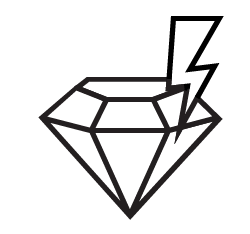 |
How it works:
Something that not too many people know about diamonds is that they resist electricity. Testing a loose stone for electric conductivity is especially helpful if you aren’t sure whether your stone is a diamond or moissanite. Moissanite (if it is made well) can be extremely difficult to tell apart from a genuine diamond, having the same level of thermal conductivity. However, one relatively simple way to tell the difference is that moissanite will conduct electricity while a natural diamond will not.
With the rise of moissanite in today’s diamond market, the majority of jewelers have an electricity testing tool on hand to determine the real from the synthetic.
RELATED: Do Lab-Created Diamonds Test as Real?
If you have a loose stone or piece of diamond jewelry and you are unsure about its authenticity, try some of these home tests. Or, bring the stone to any of Ritani’s retail partners, who are sure to have electricity testing, UV lights, and more tools that can determine the difference between a real diamond and a fake.
Have you ever tested at home or at a jewelry store whether a diamond was real or fake? What were the results? Please share any comparison photos, comments, or additional questions in the comments below!
Looking for a certified real diamond? Explore our selection of more than 80,000 of the highest quality loose diamonds.
